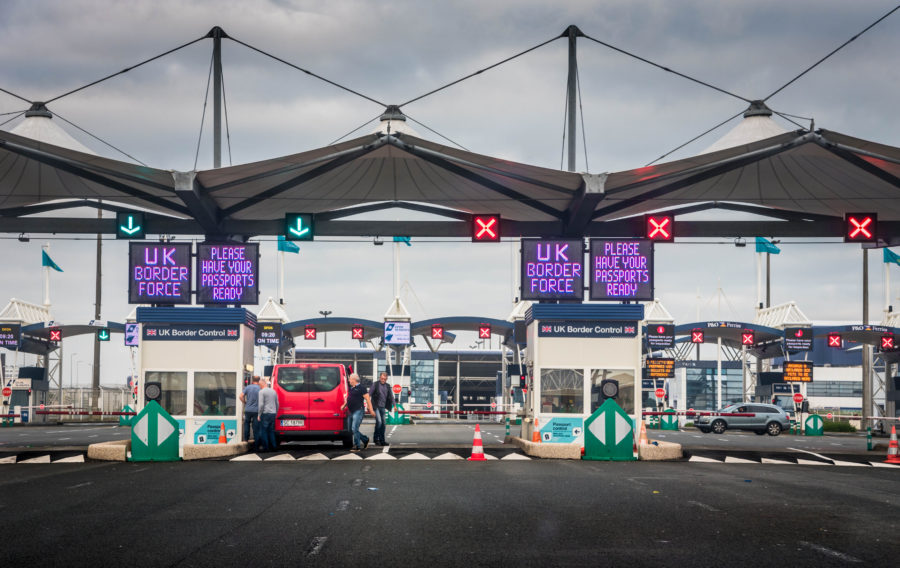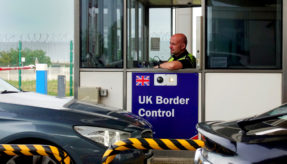
Securing our nation’s borders has long been a bone of contention, both within the UK and abroad – in Calais, for example, where the migrant crisis has strained diplomatic relations between Great Britain and France. From a political, social and economic standpoint, the immigration debate continues to cause upheaval. And yet, as complex threats emerge – each more sophisticated than the last – the efforts of the UK Border Force are proving absolutely integral to the preservation of national security, as defence features writer Robert Atherton soon found.
Where border security is concerned the biggest challenge is one of balance, I’m told. It’s a never-ending tightrope walk between national security and passenger expediency. How do we identify the relatively small proportion of high-risk passengers or cargo without impacting the free flow of people and goods into the country? Today, the answer to this question is perhaps more difficult to discern than ever before. As of 2017, best estimates place the number of air travellers at around 1.3 billion, with that figure projected to rise by a further 5% between now and 2020.
Against this backdrop, the UK Border Force is also experiencing a noteworthy rise in the number of emerging threats. Naturally, most minds alight on terrorist activity – the radicalised few who seek to destabilise the West from within by whatever means necessary. But there are more prosaic concerns as well, most notably in the form of organised crime. Illicit goods or narcotics, human trafficking and intellectual property infringement (counterfeit goods which pose a potential health and safety risk) are all issues that the UK Border Force must contend with on a daily basis.
According to Ray Batt, Director of Border Security at Unisys, the nature of these threats is developing in line with our own lifestyle trends: “As consumers in the age of globalisation and e-commerce we take for granted the likes of Amazon or Alibaba; that goods ordered online can be on our doorstep within 24 hours. But from an organised crime or counter terror perspective the growth of fast parcels and post means that components can easily be concealed within deliveries to manufacture an improvised explosive device or harmful agent.”
By that same token, a firearm could be stripped down to its basic components; each piece shipped separately across the globe to be assembled at a later date. Every package carries with it this same element of risk and the slightest oversight, however small, could result in catastrophe further down the line. The tightrope walk continues.
For the uninitiated, Unisys is the global information technology specialist responsible for the development, operation and maintenance of risk assessment systems on behalf of US Customs and Border Protection – itself part of the Department of Homeland Security. In Ray’s view, border agencies are beginning to extend their reach outward beyond their physical jurisdictions, creating e-borders where intelligence is gathered and shared to identify potential risks ahead of their arrival. It’s a concept known in industry as ‘exporting the border’.
“You have to push beyond the physical border,” explained Ray, “right the way through the supply chain and the passenger transaction to the individual making the booking or applying for the visa. Today, advanced risk assessments can be carried out long before a passenger actually travels.”
Technology has an obvious role to play here, and innovations in software – such as Unisys’ own LineSight – are proving instrumental. Advanced data analytics and machine learning are augmenting on-the-spot decision-making to better identify which passengers and cargo warrant closer inspection.
It all comes down to the risk assessment, which begins at the very first indication of travel and is refined with every additional layer of information, be it the traveller’s visa application, reservation, ticket purchase, seat selection, check-in or arrival. Each piece of the puzzle helps form a broader picture of the passenger, placing them in a category based on risk.
“Governments around the world are facing enormous challenges related to protecting their borders against growing threats like drug trafficking and terrorism,” commented Alison Brooks, Research Director for Smart Cities and Public Safety at the International Data Centre. “They will need to leverage technologies like advanced data analytics and machine learning to stay ahead of adversaries with the ability to predict threats before they occur.”
As if all this wasn’t difficult enough, we’ll soon have Brexit to contend with and all of the unknowns that come with it. For the UK Border Force, Brexit represents a dramatic shift in the status quo. The true implications have yet to be defined, however, both in Britain and across the Irish Sea where an open border between north and south is of critical economic and political importance.
“There are still a lot of unknowns,” said Ray when asked for his own assessment. “While we don’t yet know what the regulatory framework will be, it’s fair to say that the way in which we treat individuals entering the United Kingdom is going to change. Today, there’s a huge contingent of EU citizens able to freely enter the UK who are effectively regarded as low risk. These people will now possibly be considered third-country nationals and processed in the same way that non-EU citizens are currently. That has big implications certainly.”
It’s a challenging time all over. The Syrian Civil War and subsequent migrant crisis has stretched European borders to breaking point, with opportunists using this as a means to infiltrate western states and sow discord. The threat of Russian intrusion has also risen, while organised crime continues unabated like some universal constant, growing more sophisticated over time. The UK Border Force is our dividing line, and with greater reliance on technology the hope now is that the nation can be a safer place for all people, regardless of origin.
If you would like to join our community and read more articles like this please click here.







